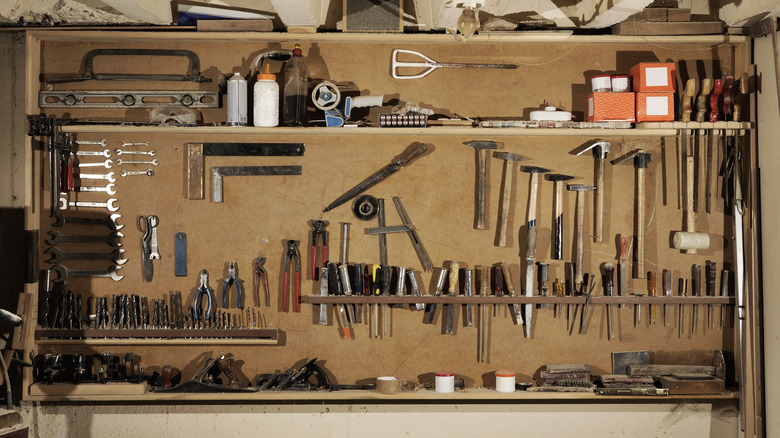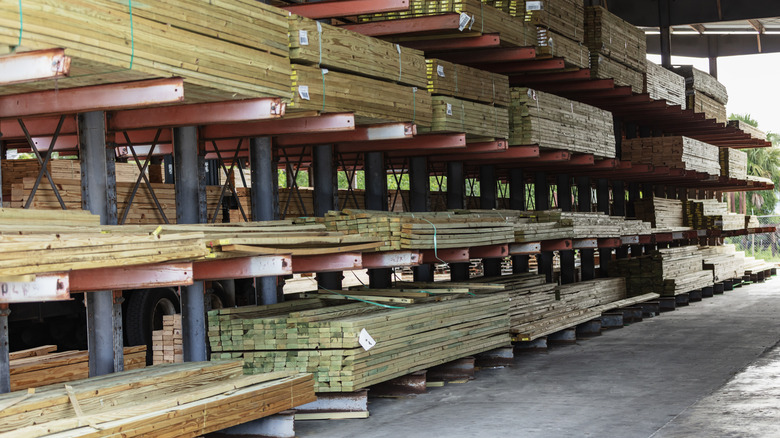Build Strong Garage Storage Shelves With These Wood Options
If you're a DIYer, a garage is probably your sanctuary. It's where your projects come to life, and a place all your tools and materials call home. But since garages don't come with infinite floor space, you probably need shelves to store all your equipment. Whether you're just exploring garage storage ideas and thinking about new shelves, or are replacing old flimsy ones, you want the shelves to be strong enough to support your gear. Most crucially, you don't want the shelves to break under the loads they carry; nor do you want them to sag. Of course, you shouldn't break the bank trying to outfit your garage with storage shelves. So, while Brazilian rosewood may be an incredibly robust (and gorgeous) species, don't pay $200 per board foot if cheaper species can do the same job but cost 100 times less.
Solid woods like oak and pine are an excellent choice. Both of these wood species have superb strength that can support a great deal of weight without getting deformed. Better yet, they have a relatively low price of approximately $2 to $3 per board foot. Plywood is yet another fantastic choice. It lags oak and pine in stiffness, but is almost just as strong otherwise. Below, we'll compare these three options across several performance criteria to help you choose the best shelving material and maximize your small garage space.
Comparing oak, pine, and plywood for use as garage shelves
While oak, pine, and plywood all make suitable garage shelf materials. Oak — red oak in particular — is a winner across several performance criteria. It has a tremendously high Modulus of Elasticity (MOE), the measure of how much the wood deflects (i.e. temporarily sags) when loaded. For example, while white pine has an MOE of 1,240,000 psi, red oak almost doubles this measure with an MOE of 2,200,000. In practical terms, this means red oak can carry double the weight white pine can without sagging. Red oak also scores high points for bending and compressive strength, clocking in at 13,400 psi and 6,540 psi, respectively. These values mean that red oak can support roughly 55% more weight perpendicular to the grain and 36% more weight parallel to the grain, before failing, than white pine.
We're not saying that white pine is weak. It may be less robust than oak, but it'll still do a bit better than the moderately-priced plywood. Speaking of costs, white pine is 25% cheaper than oak, with a typical price tag of about $2.50 per board foot, compared to red oak's $3.30.
Let's not forget plywood. In terms of strength, it's about 15% and 44% less stiff than white pine and red oak. So, if you choose to maximize your garage storage space with plywood shelves, they will sag under a lighter weight than pine or oak ones would. However, plywood has a high Modulus of Rupture (bending strength) of 4,900 to 6,200 psi, which is comparable to that of white pine and red oak. This metric should put your mind at ease that plywood will hold the same load as its hard wood counterparts perpendicular to the grain without failing — even if it sags more.

